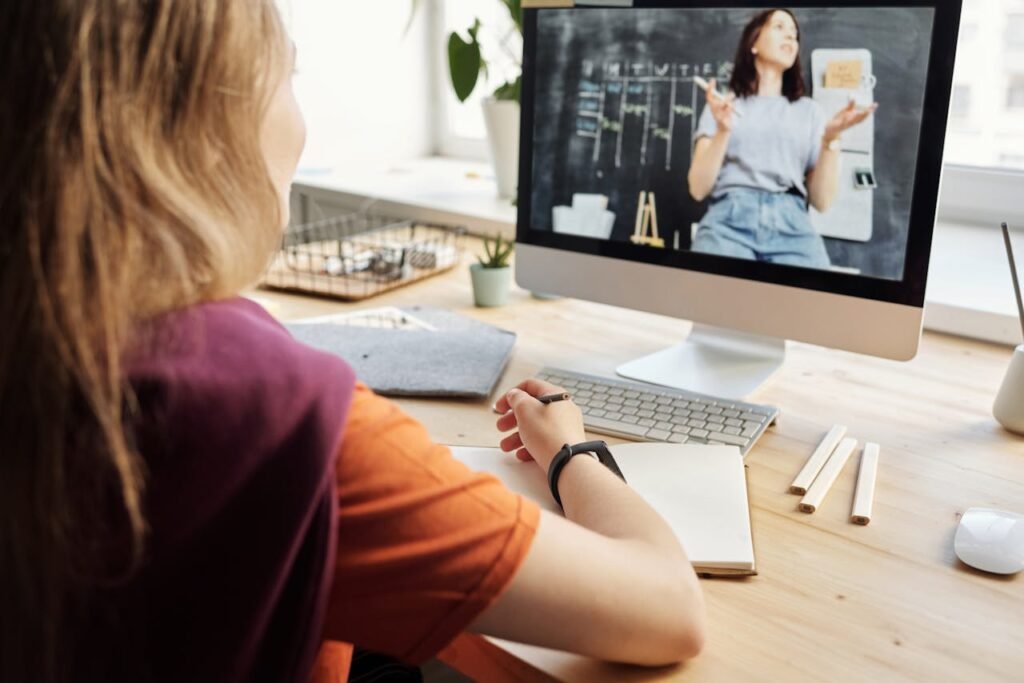Screens are now a big part of our lives. Phones, tablets, TVs, computers — they’re always around. Kids watch cartoons, play games, video call grandparents, and even learn online. Screens are not all bad. In fact, they can help kids learn and grow in smart ways — when used the right way.
But too much screen time? That’s where things can get tricky.
At Debsie, we work with children from all over the world. Some of them are as young as five. Some are teens. And we’ve seen a pattern: the way children use screens can affect how they focus, remember, think, and even feel.
So in this article, we’re going to explore how screen time really affects a child’s brain. We’ll keep it super simple. No big science words. Just helpful facts, real stories, and easy tips for parents and teachers who want the best for their kids.
What Screen Time Does to the Developing Brain
Before we talk about good and bad screen time, we need to understand one important thing — a child’s brain is still growing. It’s not just getting bigger. It’s building strong connections every day. These connections help children learn how to speak, move, think, feel, and solve problems. And during the early years — from birth to age 18 — the brain is learning very fast.
When a child spends time on a screen, it changes how their brain grows. It can help in some ways, and hurt in others — depending on how much time they spend and what they are doing with that time.
Let’s break this down.
The Brain Works Hard During Screen Time
Even if a child looks relaxed while watching a cartoon or playing a game, their brain is not resting. It’s very active.
Screens show fast pictures, bright colors, and loud sounds. The brain has to process all of that at once. It’s trying to follow the story, understand the images, react to the music, and — in games — make quick decisions. That’s a lot.
This kind of activity makes the brain work fast — sometimes too fast. The more often a child’s brain is in this high-speed mode, the harder it becomes to enjoy slow, quiet, thoughtful tasks like reading a book or drawing a picture.
The Brain Gets Hooked on Fast Rewards
Have you ever noticed how kids don’t want to stop playing a game or watching a video? That’s because the brain loves rewards.
When something fun happens on a screen — like scoring a point or seeing something funny — the brain releases a chemical called dopamine. It’s the “feel good” chemical. It makes us want to do that thing again.
This is okay in small amounts. But if a child gets used to getting dopamine from fast screen rewards all the time, their brain begins to expect quick rewards everywhere.
That becomes a problem in school. Reading a book or solving a puzzle doesn’t give the same quick “buzz.” So, the child might say “I’m bored” — not because they are lazy, but because their brain is now trained to look for faster fun.
Screen Time Affects Brain Connections
As children grow, their brain is forming billions of connections — kind of like roads between cities. These connections help them remember things, understand new ideas, and make smart choices.
When children do the same thing again and again — like playing the same game or watching the same type of show — the brain builds stronger roads for that. But if they don’t use other parts of the brain — like the parts used for creativity, deep focus, or solving problems — those roads stay weak.
That’s why it’s important to balance screen time with real-life activities like reading, talking, building, moving, and playing. Those things strengthen other roads in the brain.
Screen Time Shapes How Children See the World
What a child sees and hears every day becomes part of how they think. If they watch too many shows with fast action or loud arguments, they may start to think the world is always like that. If they play games where they win by being quick or sneaky, they may believe that’s how success works.
But when children play with real people, read stories with meaning, or listen to music that makes them think — they begin to understand feelings, fairness, kindness, and curiosity.
At Debsie, we make sure the screen is showing things that grow the brain, not just grab attention. That’s why our lessons are calm, thoughtful, and full of fun learning.
Focus and Attention: Why It’s Getting Harder for Kids to Sit Still
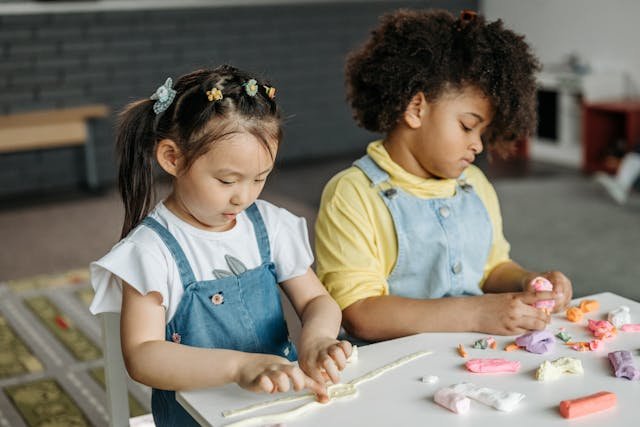
Many parents and teachers today are noticing something new: kids are having a hard time sitting still and paying attention. Even during fun lessons or story time, they may get distracted easily. They wiggle, talk out of turn, or give up quickly when something gets hard.
So, what’s going on?
One big reason is how screens affect the brain’s ability to focus. The more time children spend with fast-paced digital content, the harder it becomes for their brain to slow down and stay with one thing. Let’s look at how this happens.
Screens Teach the Brain to Jump, Not Sit Still
Most of the content children watch on screens today moves very quickly. Cartoons change scenes every few seconds. Games flash lights and give instant feedback. Even short videos — like the ones on YouTube or TikTok — are full of fast edits, pop-ups, and surprises.
This kind of speed trains the brain to expect change all the time. So when the screen is off and it’s time to focus on something steady — like reading, writing, or solving a puzzle — the brain gets restless. It wants the next thing. It feels like something is missing.
Children may say, “I’m bored,” but really, their brains are just used to being over-stimulated.
Fast Rewards, Short Patience
In many games and apps, kids win quickly. They get coins, stars, and sound effects just for tapping the screen. These rewards come fast — sometimes every few seconds.
This teaches the brain that success should happen quickly, with little effort. But in real life, learning takes time. Math problems don’t give coins. Reading a long story takes focus. Writing an essay doesn’t have sound effects.
So when kids are asked to do these slower tasks, they might feel frustrated. Not because the task is too hard — but because their brain isn’t used to waiting for rewards.
Struggling to Stay With One Thought
The brain has something called working memory. It helps us hold ideas in our head while we think about them. It’s like mental sticky notes. But when children switch from one screen to another — or jump from a video to a game to a message — their working memory gets tired.
They forget what they were thinking. They lose their place in the story. They stop mid-task because their brain is skipping around.
At Debsie, we help rebuild this by encouraging deep work — simple tasks that ask kids to focus on just one thing at a time. We use games, yes, but also quiet moments, questions, and step-by-step thinking to gently stretch their attention span.
Sitting Still is a Skill — and It Can Be Learned Again
The ability to sit still and stay focused is not just about willpower. It’s a brain skill — and like all skills, it can be strengthened.
When kids have healthy routines, brain-friendly tasks, and the right kind of screen time, their focus gets better. They learn to finish things. To keep trying. To feel proud when they stick with something hard.
It just takes practice — and patience.
Screen Time and Sleep: Why Kids Feel Tired But Can’t Sleep
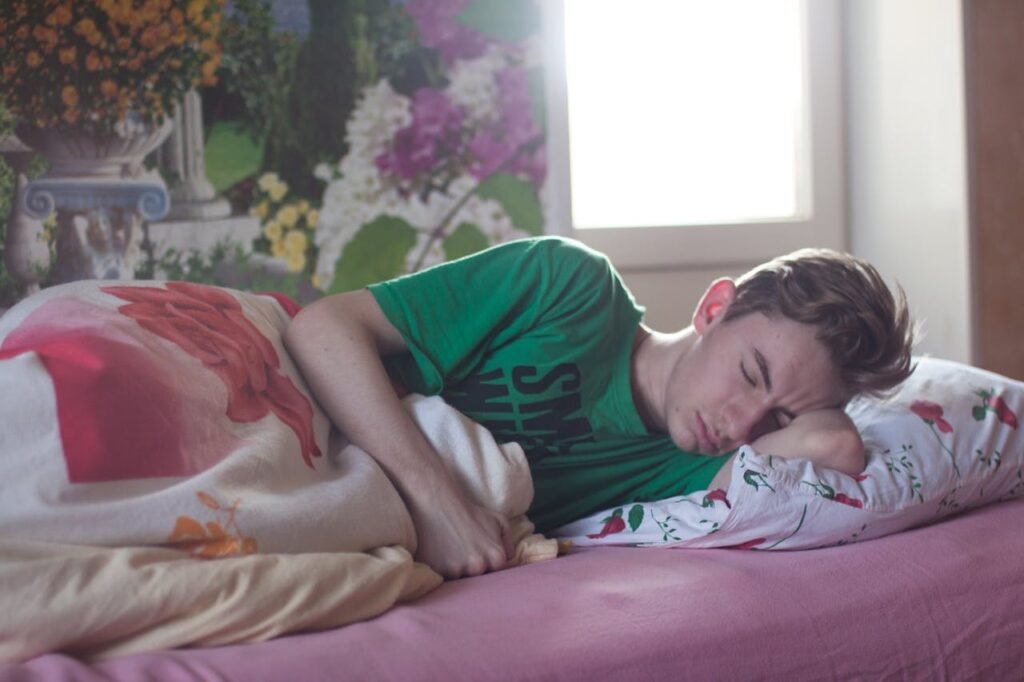
You may have noticed your child staying up too late or feeling tired during the day. Even when they’re lying in bed, they can’t fall asleep easily. A big reason? Screens.
Blue Light Tricks the Brain
Screens give off a kind of light called “blue light.” It tells the brain to stay awake, even if it’s nighttime. When a child uses a tablet or phone before bed, their brain stays alert instead of winding down. This can make it harder to fall asleep.
Sleep Matters for the Brain
When children sleep, their brain cleans itself. It stores memories, builds new brain paths, and prepares for the next day of learning. If kids aren’t sleeping well, they wake up feeling foggy. They forget things more easily. They get upset faster.
What You Can Do Tonight
Turning off screens at least one hour before bedtime can help. A quiet story, soft music, or even talking together helps the brain slow down. At Debsie, we encourage families to create calm evening routines that support deep sleep and healthy growth.
Emotional Health and Screens: When Feelings Get Mixed Up

Screens can make children laugh, but they can also make them upset, anxious, or angry — sometimes without warning. That’s because the emotional part of a child’s brain is still learning how to deal with big feelings. When too much screen time comes into play, it can throw those emotions off balance.
Mood Swings After Screen Time
Many parents say their kids become grumpy or frustrated after using screens for a long time. Some children cry when it’s time to stop watching. Others act out. This isn’t just “bad behavior” — it’s a brain struggling to slow down after too much stimulation.
Constant Comparison and FOMO
Older kids and teens sometimes scroll through social media or watch perfect-looking videos of other kids. This can make them feel like they’re not good enough. They start comparing their lives to the ones they see online. That can lead to feelings of sadness, anxiety, or even low self-esteem.
Building Emotional Strength Through Offline Time
Time away from screens helps children reconnect with their own feelings. Playing outside, doing art, building with blocks, or simply daydreaming allows the brain to settle. At Debsie, we include activities that build emotional awareness — like reflective writing, storytelling, and group sharing — so children feel more in control of their thoughts and feelings.
Learning With Screens vs. Learning From Screens
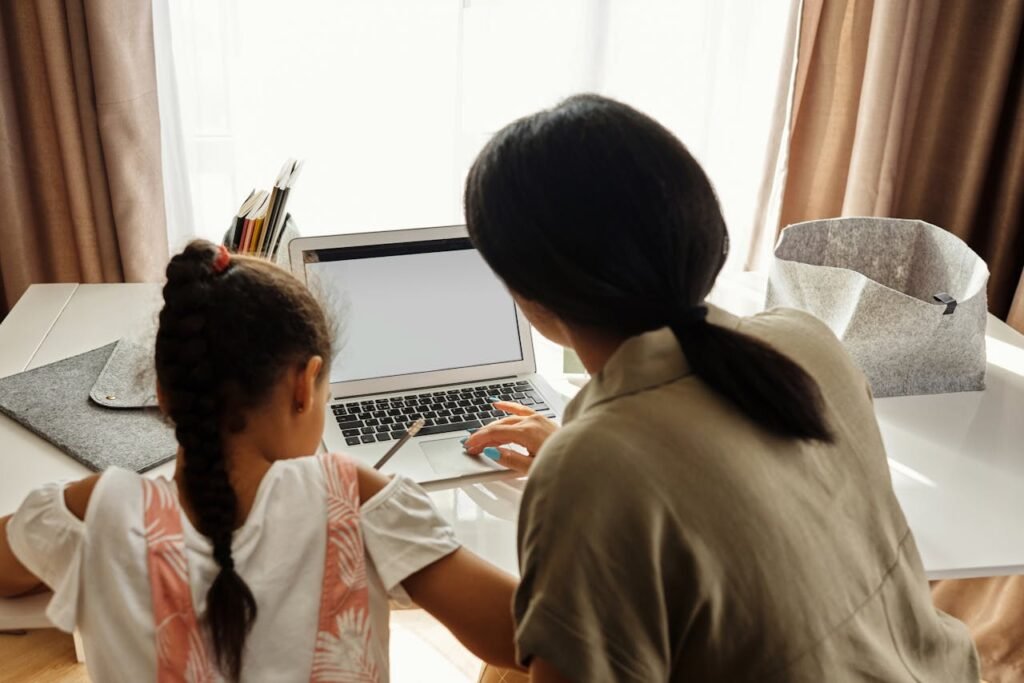
Not all screen time is the same. There’s a big difference between using a screen to play random games and using a screen to actually learn. The problem is, many children don’t know the difference. And that’s where parents and teachers come in.
Passive vs. Active Screen Use
Passive screen time is when a child just watches — like a video playing in the background or endless cartoon episodes. The brain doesn’t work hard. It’s like eating candy all day. Active screen time, on the other hand, involves thinking, solving, speaking, or creating. That’s like a healthy meal for the brain.
What Makes Learning Screen Time Different?
At Debsie, we use screens to teach, not to distract. Our online lessons include talking to real teachers, answering questions, building projects, and solving puzzles. Children are part of the action. They’re not just watching — they’re thinking.
It’s All About Balance
Even good screen time needs breaks. Our teachers give children time to look away, stretch, and move their bodies. This helps the eyes, the brain, and the whole body stay healthy. When screens are used the right way, they can help children grow smarter — not just faster.
The Importance of Boredom and Free Time
This might surprise you, but boredom is actually good for the brain. It gives the mind time to rest, imagine, and come up with new ideas. But when kids are always entertained by screens, they miss this chance to be still and think.
Why Boredom Builds Creativity
When a child feels bored, their brain starts to wander — and that’s when creativity happens. They might pick up a pencil and draw. Or invent a game. Or ask deep questions. These are moments when the brain grows in smart, quiet ways.
Screens Can Take Away That Quiet Time
If a screen is always filling every moment, the brain doesn’t get a break. Children begin to feel uncomfortable with silence or stillness. They may say “I’m bored!” just a few minutes after turning off a device. But that boredom is actually the start of something important.
Helping Kids Get Comfortable With “Doing Nothing”
At Debsie, we teach children that not every moment needs to be filled. We build in quiet thinking time, creative breaks, and simple challenges that invite deep thought. You can do the same at home — with quiet play, reading nooks, or tech-free times during the day.
Creating Healthy Screen Habits at Home
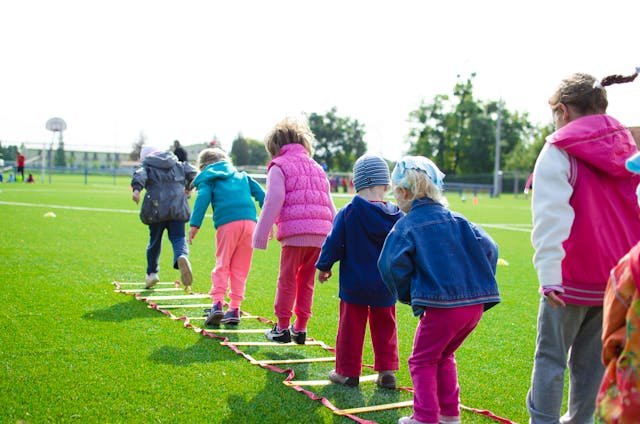
Knowing the effects of screen time is just the beginning. The real power comes in what we do next. Creating smart, healthy habits around screens can make a big difference in how children grow, think, and feel.
Start With Clear, Kind Limits
Kids feel safest when they know what to expect. You don’t need to ban screens completely. Just set simple, loving rules. For example: “After dinner, no screens.” Or, “Let’s do 20 minutes of learning before any games.” When limits are clear and kind, kids follow them better — and feel more in control too.
Build a Daily Routine That Balances Tech and Real Life
Make sure your child has time each day for real-world activities — like reading, going outside, helping in the kitchen, playing with toys, or simply chatting with family. These small moments build focus, connection, and brain power.
You can also create screen-free zones — like the dining table or bedroom. These little changes help kids understand that screens are tools, not toys that control their day.
Be a Role Model
Children learn most by watching us. If they see parents or teachers scrolling all day, they’ll want to do the same. But if they see us reading, resting, or talking without a phone in hand, they learn balance. At Debsie, even our teachers practice mindful screen use during classes — modeling how to stay focused, take breaks, and look after their own well-being.
When Screens Support Learning — and When They Don’t
The truth is, screens are not the enemy. In fact, they can be one of the best ways to learn — if used with purpose. The key is to use screens to build the mind, not to replace real life.
Choose Tools That Make Kids Think
Ask yourself: “Is this screen helping my child think, imagine, solve, or create?” If the answer is yes, it’s probably helpful. If not, it might be time to swap it out for something else — like a book, a question, or a conversation.
At Debsie, every lesson is designed to make the brain do something, not just watch something. Children solve science puzzles, build math projects, code games, write stories, and ask big questions. Screens are the window — not the driver.
It’s All About the Experience
A 10-minute online music game where your child claps along and moves their body might be far better for the brain than an hour of silent cartoon-watching. It’s not about how long they’re on a screen. It’s about what they’re doing while they’re there.
How Debsie Helps Turn Screen Time into Brain Time

At Debsie, we don’t fight screen time — we reimagine it.
We know screens are part of children’s lives. But instead of letting screens distract, we use them to focus. Instead of endless entertainment, we give children real learning. Instead of fast clicks and noisy games, we build deep thinking, step by step.
Here’s how we do it:
1. Learning That Feels Like Play, But Builds Real Skills
Our lessons are fun — but make no mistake, they’re powerful. Whether it’s coding a game, solving a tricky math challenge, or exploring a science mystery, every Debsie activity is designed to stretch the brain gently. Kids are engaged, focused, and learning — without even realizing how much they’re growing.
2. Human Teachers Who Guide With Heart
Our expert teachers don’t just teach lessons — they connect. Through live sessions and small group classes, children get personal attention and kind guidance. They’re seen. Heard. Encouraged. This human connection balances the screen and builds focus, trust, and motivation.
3. Smart Screen Time That Builds Focus, Not Distraction
We structure screen time to train attention spans. Each lesson includes movement breaks, reflection time, and interactive tasks that activate different parts of the brain. Kids don’t just sit and stare — they move, think, speak, write, and solve.
4. A Balanced Curriculum That Grows the Whole Brain
We don’t teach just one subject. We offer math, science, coding, geography, reading, writing, music, and more — for kids aged 5 to 18. This means your child’s brain gets a well-rounded workout. Logic, creativity, memory, focus, language — all are strengthened through the right kind of digital learning.
5. Built for Today’s Kids — and Tomorrow’s World
Our content is modern, global, and exciting. Whether your child wants to learn how the oceans work, build a robot, write a short story, or explore how music affects emotions — Debsie gives them a place to learn with purpose and passion.
We turn curiosity into confidence. We turn screen time into smart time.
Conclusion: Helping Kids Grow Smarter, One Click at a Time
Screens are part of our world. We can’t ignore them — and we don’t have to. But we can teach our children how to use them in ways that grow their minds, not shrink their focus.
When screen time is used with care — when it includes movement, thinking, creativity, and real learning — it becomes a tool for growth. But when it’s constant, mindless, and overstimulating, it begins to chip away at the very skills children need most.
At Debsie, we’re not just teaching kids with screens. We’re helping them learn how to think, how to wonder, how to solve, and how to care — both online and off.
Your child’s brain is full of potential. The right habits, the right guidance, and the right kind of screen time can unlock it.
👉 Try a free class with Debsie today and see how we turn screen time into brain time — with joy, focus, and real human connection.
👉 Or explore our full curriculum in science, math, coding, music, language and more. Smart kids start here — and we’re so ready to welcome yours.
Read Next:
